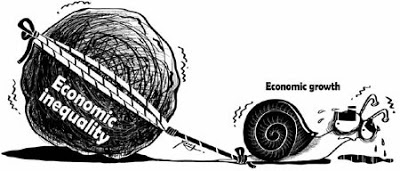New paper published by PERI. From the abstract: This paper examines the relationship between inequality and growth in the neo-Kaleckian and Cambridge growth models. The paper explores the channels whereby functional and personal income distribution impact growth. The growth – inequality relationship can be negative or positive, depending on the economy’s characteristics. Contrary to widespread claims, inequality per se does not impact growth through macroeconomic channels. Instead, both growth and inequality are impacted by changes in the underlying forms and pattern of income payments. However, inequality is critical at the microeconomic level as it explains differences in household propensities to consume which are at the foundation of neo-Kaleckian and Cambridge growth theory. Read full paper here.
Topics:
Matias Vernengo considers the following as important: Demand-led Growth, inequality, Palley
This could be interesting, too:
Jeremy Smith writes UK workers’ pay over 6 years – just about keeping up with inflation (but one sector does much better…)
Matias Vernengo writes Paul Davidson (1930-2024) and Post Keynesian Economics
Robert Skidelsky writes The Roots of Europe’s Immigration Problem – Project Syndicate
Nick Falvo writes Report finds insufficient daytime options for people experiencing homelessness
New paper published by PERI. From the abstract:
This paper examines the relationship between inequality and growth in the neo-Kaleckian and Cambridge growth models. The paper explores the channels whereby functional and personal income distribution impact growth. The growth – inequality relationship can be negative or positive, depending on the economy’s characteristics. Contrary to widespread claims, inequality per se does not impact growth through macroeconomic channels. Instead, both growth and inequality are impacted by changes in the underlying forms and pattern of income payments. However, inequality is critical at the microeconomic level as it explains differences in household propensities to consume which are at the foundation of neo-Kaleckian and Cambridge growth theory.

